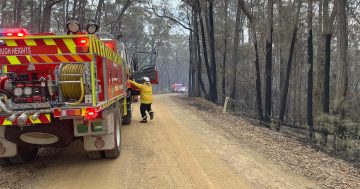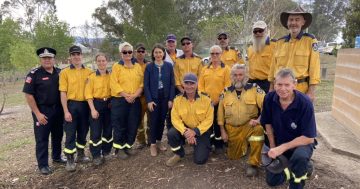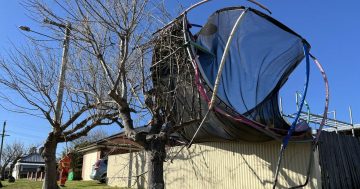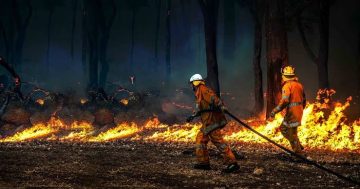
Low relative humidity combined with underlying soil moisture means that risk factors for bushfires are higher this year than they were at the same time last year. Photo: NSW RFS Facebook page.
Winter in About Regional territory is beautiful – the low sun spreads its golden light over the snow-dusted gums of the mountains to the frosty river flats and the chilly sands of our turquoise sea.
It’s also a time of year where landholders are encouraged to clean up, burn off and get ready for the next fire season. Those bonfire nights are often part of a winter celebration but as this dry winter progresses, some are wondering, and rightly so – is it safe to burn off this year? What else can we do to be prepared for the upcoming fire season?
Happy to help with a few tips, Marty Webster, Community Safety Officer for Far South Coast Rural Fire Service [RFS], which covers Moruya to Bega, says that there is concern within the organisation about high fire risk this year.
Laughing wryly, Marty says that winter “used to be our quiet time.”
“We’re very concerned, there’s the drought factor and as well as not having had the rainfall, we have relatively low humidity, so the air is actually dry, making conditions much more conducive for fire,” Marty explains.
These factors add up to the fire risk being higher this year than at the same time last year, a fact which is particularly distressing for those who were affected by Bega Valley fires last year, Tathra in March and the Yankees Gap Fire near Bemboka in August/September.
And it looks like dry conditions will continue into spring – the Bureau of Meteorology has released their climate forecast from July through September 2019 and it suggests a drier and warmer than average three months is likely for large parts of Australia.

The early stages of the Yankees Gap Fire, captured by Rachel Helmreich at around 11 am August 15, 2018.
This kind of dry, coupled with frost-cured grass, has meant the RFS has had more call outs than is typical for this time of year, mostly grass fires started by hot vehicle exhausts.
“I think especially in the Bega Valley area, with the big fires last year still in people’s minds, we’re seeing that people are being extra cautious about calling us,” Marty says “and we are happy about that. We definitely don’t want to miss anything.”
But even taking all that into consideration doesn’t fully explain the increase in winter fire activity.
“The bottom line is that for the last few years, we’ve been experiencing drier than average winters,” Marty says.
If you’re looking to mitigate risk at your place, Marty advises that burning off is not the only way to clean up your property in preparation for summer.
“Composting, mulching, mowing, and brush cutting are all really important and effective ways to cut down the amount of fuel around your house,” he says “and we always recommend starting at the house and working your way out.”
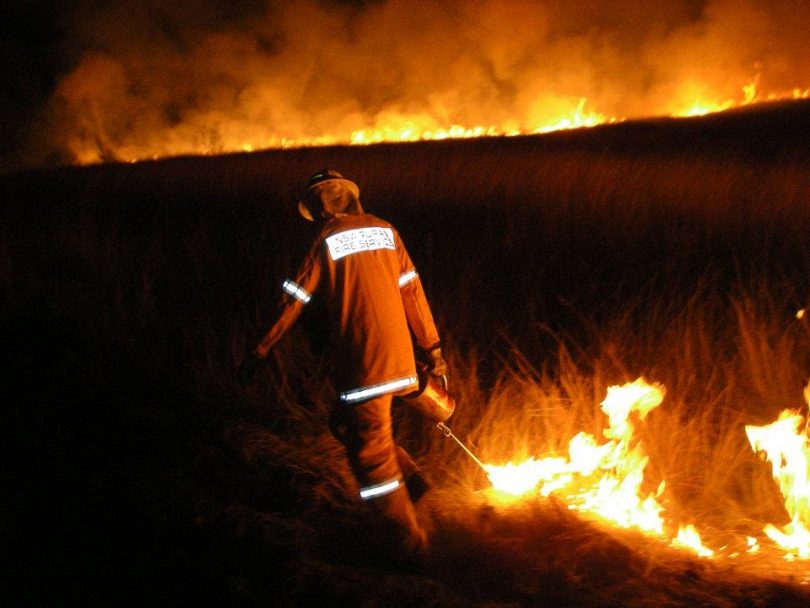
With drier than usual conditions, it may be best to leave the burning off to the professionals. Photo: Candelo Rural Fire Brigade Facebook.
If you do decide to do a burn, Marty advises making small heaps instead of one big pile, making it easier to manage and complete the burn during the right conditions.
“A big pile can smolder and blow up in windy conditions. Monitor your fires until they are cold – you should be able to stick your hand in it.”
While burning, have enough water on hand to extinguish the fire.
“Another thing we hear pretty often is that people had gear for putting the fire out but hadn’t checked if it was operational,” Marty says
“Too often we hear that the pump didn’t start or – we realised too late that we’d lent the hose to the neighbors. Have everything ready before you light the fire.”
Another point, Marty adds tactfully, is to ensure that there is a responsible adult in charge of the fire.
“Fire at this time of year is a celebration, I love it as much as anyone else,” he says “but keep in mind that if you can’t drive home because you’ve been drinking, you can’t be responsible for a bonfire or burn.”
For more information about fire preparedness and hazard reduction, visit the NSW Rural Fire Service website.









